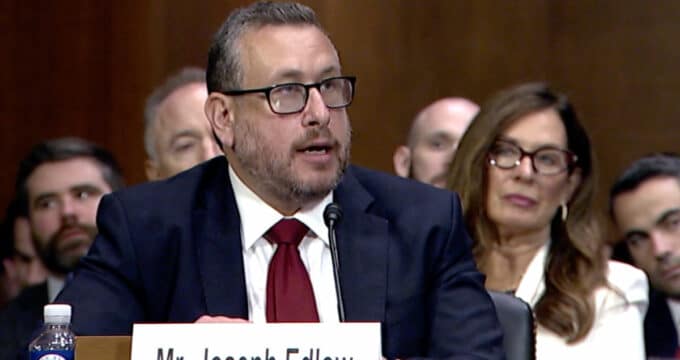All shook up: trying times for Australian TAFEs
Since 2008, a raft of changes in Australia's vocational education and training (VET) sector has seen more than a few casualties. Technical and Further Education (TAFE) colleges in particular have been in the firing line. ICEF Monitor explores the move to deregulate the sector and shines a spotlight on the situation in three key states: Victoria, New South Wales and Queensland.
VET and TAFE background
TAFEs have traditionally provided around 60-70% of VET places, jointly funded by federal and state governments. Around 140,000 international students train at TAFEs each year, alongside 1.9 million locals. TAFEs across Australia provide a broad range of vocational qualifications from certificate I to advanced diploma level, apprentice and traineeships, graduate certificates, diplomas and degrees. The VET sector in general and TAFEs in particular are highly regarded in Australia. A recent policy paper from the Centre for Development reports on measured strengths including good ROI for individuals, the economy and society. However, state governments across the country are embracing deregulation and implementing significant funding cuts.
Victoria
Victoria led the move toward deregulation in 2008. Eager to embrace a marketised model of VET, Victoria invited private training companies to compete against government training institutions and TAFEs for public sector funding. Contestability and student entitlement underpinned the move; the government hoped to achieve a more flexible system for students plus raised standards through increased competition. However, growth was driven by student demand rather than industry need, and private training providers (both good and bad) flooded the uncapped sector. With little guidance and a myriad of offers from dubious operators, students squandered their one-off entitlement vouchers on courses of both questionable quality and usefulness. These students are now liable for the full cost of any further training. The extent of rorting was widely exposed by the media; examples such as this ABC television interview were all too common. Rorts included private trainers delivering courses in 30 hours that would take 6 months at TAFE, while other providers simply faked outcomes and collected the government’s money. The artificially created market unravelled rapidly due to a lack of key regulatory mechanisms including accreditation and quality assurance measures – an estimated budget blowout of around AUS $475 million for 2011- 2012 was just one of the repercussions. Today, through no fault of its own, TAFE Victoria is looking at funding cuts of nearly AUS $300 million, despite growing enrolment figures. The state government is exploring a wide range of options to address the problems including the restructuring and merging of TAFE colleges.
New South Wales
Other Australian states have observed the Victorian experiment closely with several going on record to criticise the process and poor outcomes. However, VET reform and deregulation is underway in New South Wales and Queensland. A New South Wales 2011 discussion paper on the future of VET culminated in the 2012 "Smart and Skilled" reforms. Announcing the changes, Minister for Education Adrian Piccoli MP made it clear that NSW would not simply follow Victoria’s lead.
“Reforms have been informed by extensive consultation with industry and the broader VET community. We have listened to valuable feedback to develop a reform package that balances the interests of individuals, businesses and industry. We have also looked closely at lessons learned in other states.”
From 2014, "Smart and Skilled" will introduce:
- an entitlement for entry-level training up to and including Certificate III;
- targeted support for higher level qualifications;
- informed choice with improved quality measures;
- recognition of the role and function of TAFE NSW as the public provider;
- greater support for regions and equity groups;
- better information for consumers.
The reforms include measures designed to protect TAFEs and prevent Victorian-style budget blowouts:
- guaranteed funding for TAFE operations and community services;
- setting fees and subsidies to prevent colleges from undercutting each other;
- restricting funding to courses deemed to be of vocational benefit;
- keeping a tight rein on the colleges approved to offer training,
Many details are yet to be ironed out - the TAFE budget and lists of approved courses and colleges will be finalised during 2013. However, the New South Wales state government has announced cuts to TAFE funding as part of a package to address the state’s budget deficit. A total of 800 jobs are set to be cut and most TAFE fees will rise by about 10% next year with concession fees almost doubling to AUS $100. Advanced diplomas will rise AUS $150 to AUS $1720 a year, while fees for certificate III courses - the standard apprenticeship qualification - will rise to AUS $793. In addition, as of 1 January 2013, fine arts courses will lose all state funding. Federal Tertiary Education Minster Senator Chris Evans spoke out about the cuts:
"At the very time we need to grow Australia's skills base, the NSW Liberal State Government is implementing policies that could see a reduction in training opportunities, including for those living in regional areas," Senator Evans said.
Senator Evans warned states they could miss out on federal training incentives if agreements were broken and training levels were not maintained.
Queensland
Queensland has also entered the deregulation fray. An independent report on improving operation and outcomes for the VET sector was delivered to the Minister for Education, Training and Employment in early November. The Queensland Skills and Training Taskforce report suggested:
- Queensland’s TAFE campuses are outdated, poorly maintained and inefficient;
- 13 of the state's 80+ colleges are empty, others have very few students;
- about half of Queensland's TAFE campuses should be closed.
Significant public outcry greeted the news. However, Queensland Training Minister John-Paul Langbroek said the government would consider “the potential ramifications” of the task force recommendations:
“We’re looking at this holistically because we want a more productive economy. We need to make sure we manage the change all the way through, and some of the people will need assistance to accept change – a lot of people resist change.”
The Queensland government’s response highlights four key objectives:
- an industry-engaged vocational education and training sector with a direct line to government;
- demand driven, fully contestable funding for the delivery of skills and training to grow the capacity of Queensland's training market and increase access to training across the state;
- a new era and a strong future for TAFE Queensland;
- strengthening Queensland's apprenticeship system to increase flexibility for users and increase completion rates.
The state government says the consolidation of Queensland TAFE colleges will result in modern campuses full of students, not "crumbling relics". A total of 13 campuses will be closed while another 12 will be transferred as part of the merger between the Central Queensland University and the Central Queensland Institute of TAFE.
Looking ahead
Australia has typically been perceived to be the best study destination for vocational education, as proven once again in the latest ICEF i-graduate Agent Barometer survey. It would seem that a deregulated VET sector could provide Australian states the freedom to expand tertiary education to successfully meet the needs of a growing economy. However, careful implementation with thorough checks and balances across all areas will be essential. For additional related reading, please see:
Most Recent
-
Asia “consolidating as the leading destination region” for international students Read More
-
Kazakhstan sets its sights on being a regional hub for international students Read More
-
US: Study estimates that changes to international student policies could reduce GDP by up to US$481 billion per year Read More
















